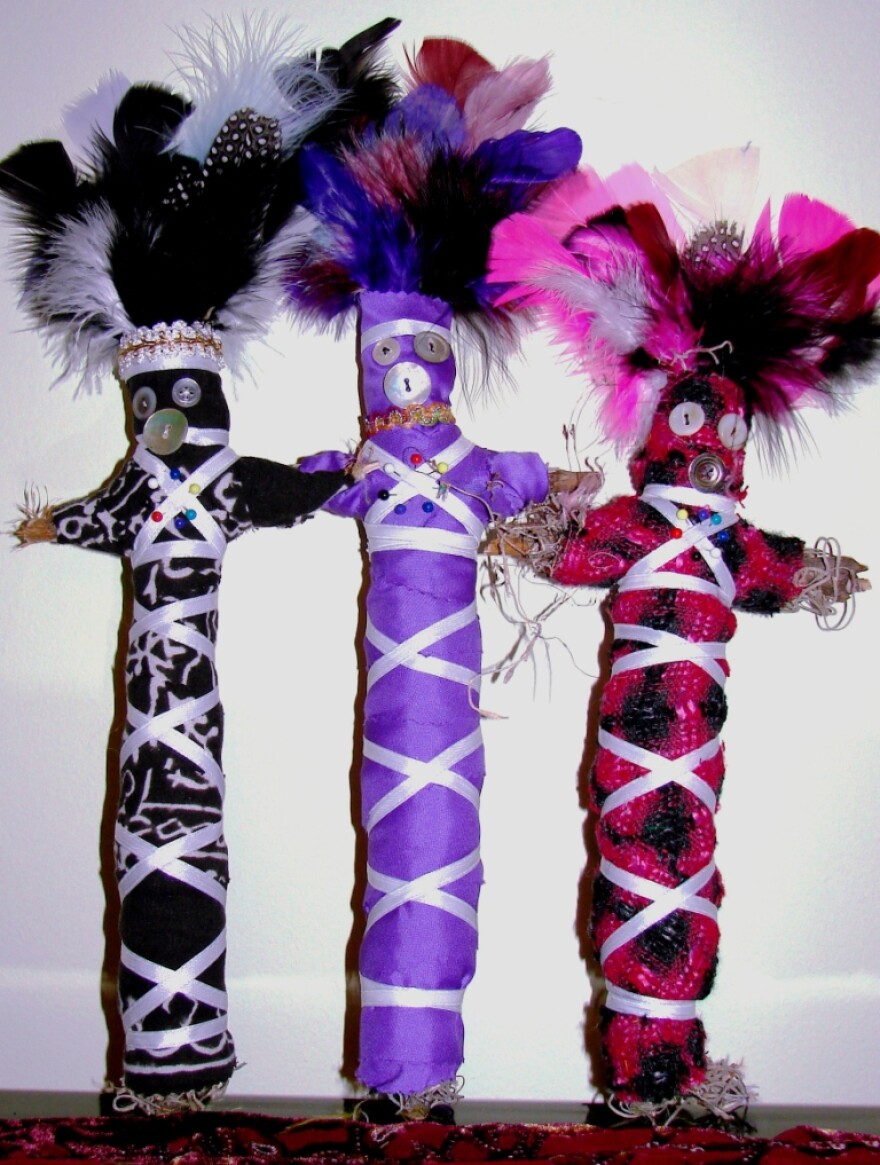Hello High Plains Radio. I’m Nina Blakeman and I’d like to explain the Louisiana Voodoo backdrop focused in on Envy Rots the Bones. In the psychological thriller, the hatred Emma Davis has for her step-mother, Faye Davis, takes root in the form of Louisiana Voodoo.
Now, my knowledge of Voodoo practice is not purported to be based on actual practice, and I don’t propose to be an expert. But what I have read that struck me interesting was some of the rituals that parallel Catholicism. So, after a good deal of reading, I decided to pack my bags for the Big Easy to see what further things I could find out.
One of the first questions I had, is how did Louisiana Voodoo come about? Voodoo was transplanted from West African nations for slave labor to the Caribbean nations, such as Haiti, but it is also practiced throughout the world, and in the United States, particularly in New Orleans.
Why the parallels to Catholicism? Dating back to the 16th century, slaveowners were predominantly Catholic. They feared if the slaves were allowed to congregate, an uprising might ensue. So, only the basic elements of human decency that Christians practice were introduced to them lest they come to realize that the abhorrent practice of slavery in itself it defies Christian teaching. And, it is my understanding, that still today elements of Voodoo and Catholic rite are practiced in conjunction together in some places.
My next question was perhaps a bit sensitive to the Voodoo priestess, is Voodoo a religion? This was brought about after she voiced close workings among those that practice Voodoo and the local catholic diocese. I found her answer odd, but I didn’t question it. She stated that it was, in fact, a religion, as they also believe in a Supreme Being, and there are intermediary powers, called loas, between Him and man.
The loas are the spiritual equivalent of the Catholic saint. When asked about the evil component of Voodoo, her response was that evil exists in all areas and that one can choose to detach from its aspects of sorcery and witchcraft. Even the voodoo doll I bought for $25.00, the practitioner told me to ask the Supreme Being to bring blessing and good health to me, that it could be an instrument to bring goodwill.
Now, with this being said, I was raised Catholic, along with twelve years of parochial education, and I was taught to even read a horoscope defied the First Commandment; I am the Lord your God, thou shalt have no other gods before me. So, with astrology being such an egregious violation, offering animal sacrifices and magical practices do not seem to be any less a breach. What is magic? It is a ritualistic activity to produce or prevent a particular event through supernatural forces that would not otherwise happen.
This perhaps lends to pop-cultural believes of the evil side of the tradition. But is zombification a pop-cultural belief? Not according to some practitioners of Voodoo. Reader’s won’t believe a Duke University site I found into this. First, the recipient is given a mixture to attenuate all physiological responses (minimize breathing, heart-beat, invoke-paralysis) by the bokor. The mixture can be ingested, injected, or given by blow-dart.
The victim is taken to a doctor and declared dead, then taken for burial, but it is actually being buried alive. The victim is dug up with 8 hours to prevent asphyxiation. Over days the bokor captures the victim’s spirit and replaces it with that of a loa that the bokor controls. After a day or two, the victim is administered zombie cucumber. The victim will revive but in a state confusion and mute, destined to work as a slave to the bokor its entire existence. Folklore warns, don’t give the zombie salt . . . it will attack the bokor who created them, (Ginalis, Elizabeth, 2014.). Hmm, does that sound familiar, Dr. Frankenstein?
In Envy Rots the Bones, the antagonist, a resentful adolescent, Emma Davis, considers her to be a Voodoo priestess, but whether it is based on any true beliefs or it is a manipulation tool, I’ll let the reader decide. For High Plains Public Radio, I’m author Nina Blakeman.
Nathan S. Kline’s Zombi in Haiti, Created with Bokor’s Sorcery or Drugs? https://sites.duke.edu/ginalisgh323/zombification-process/. Retrieved November 12, 2018.







